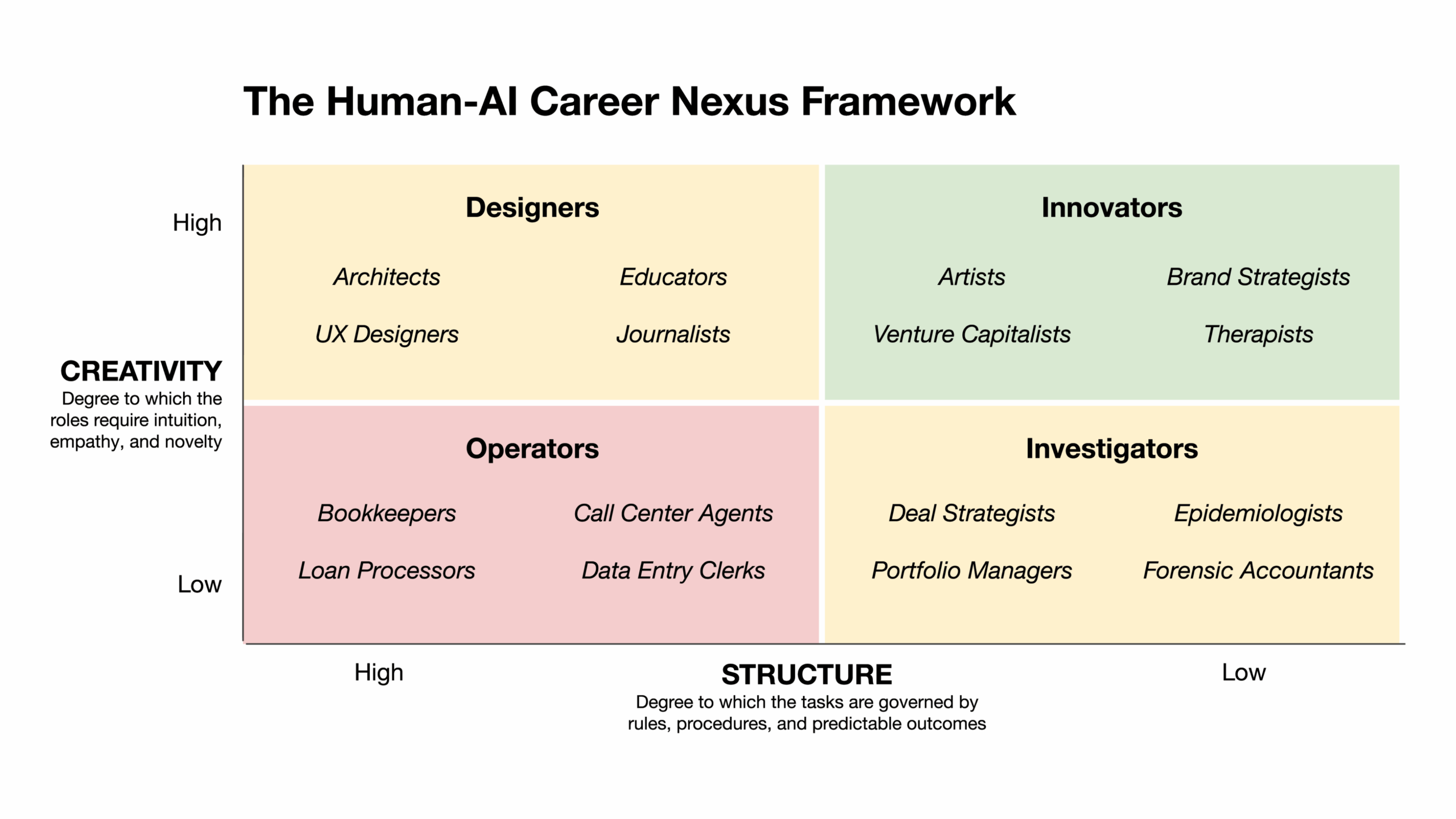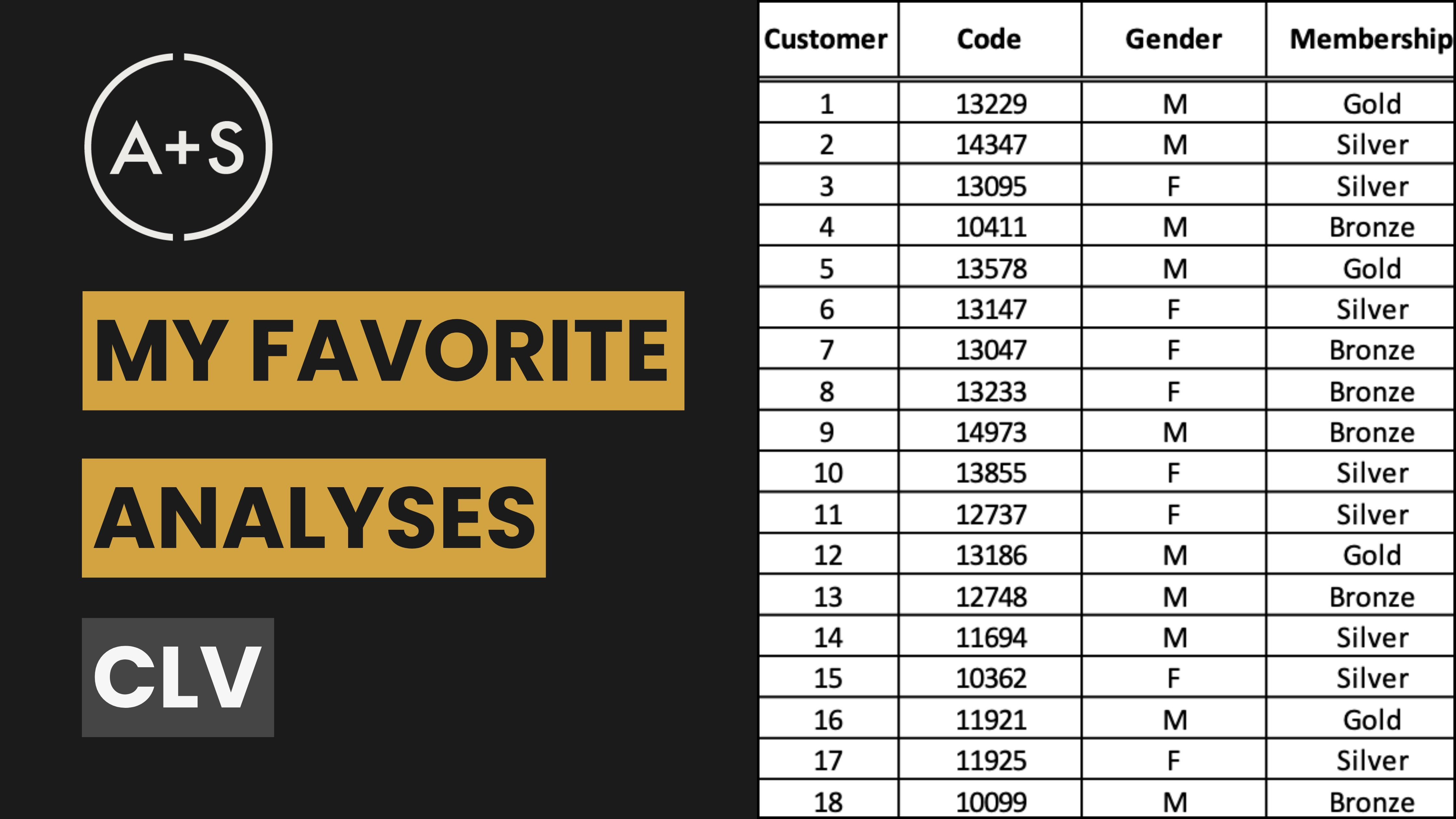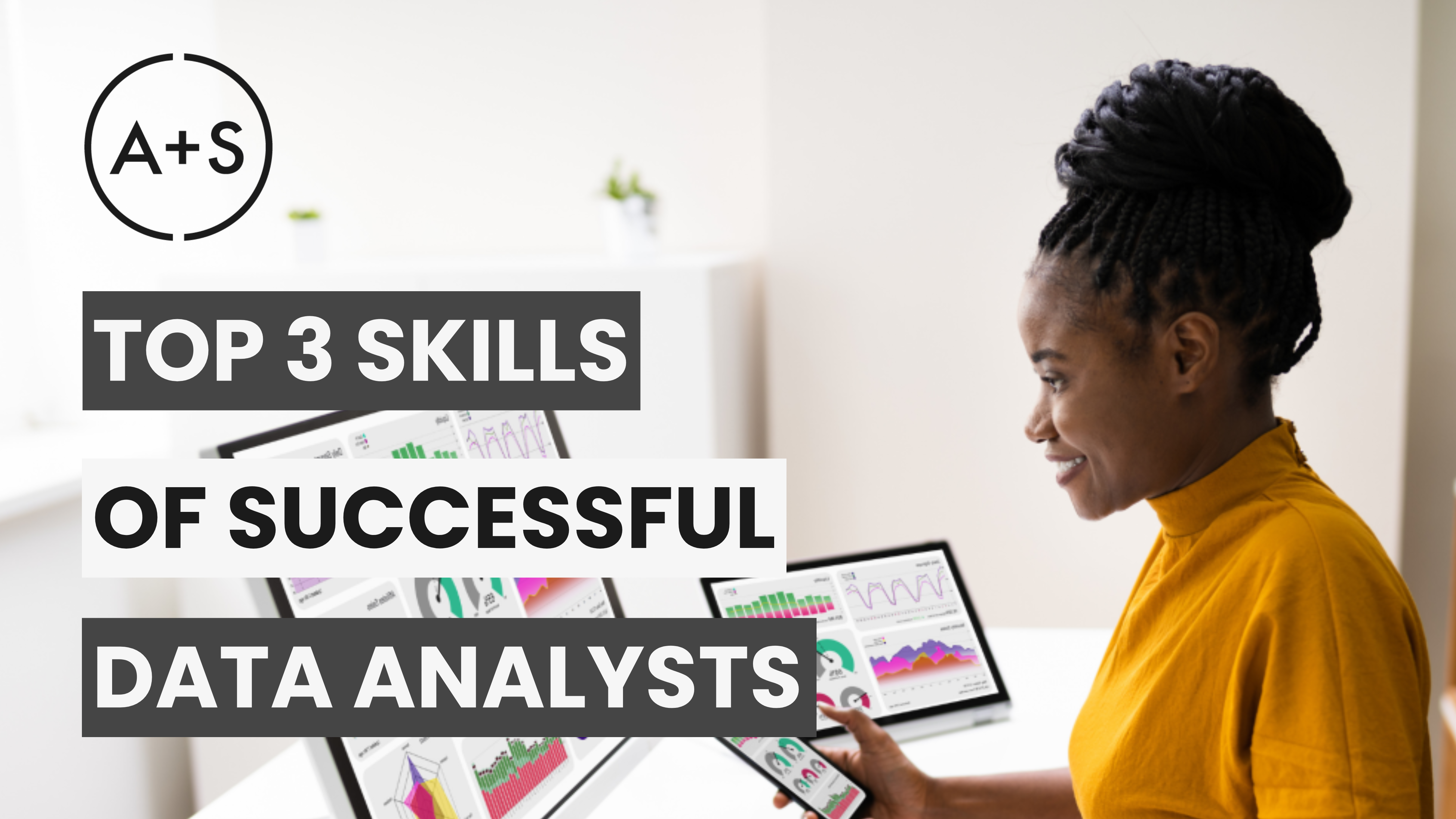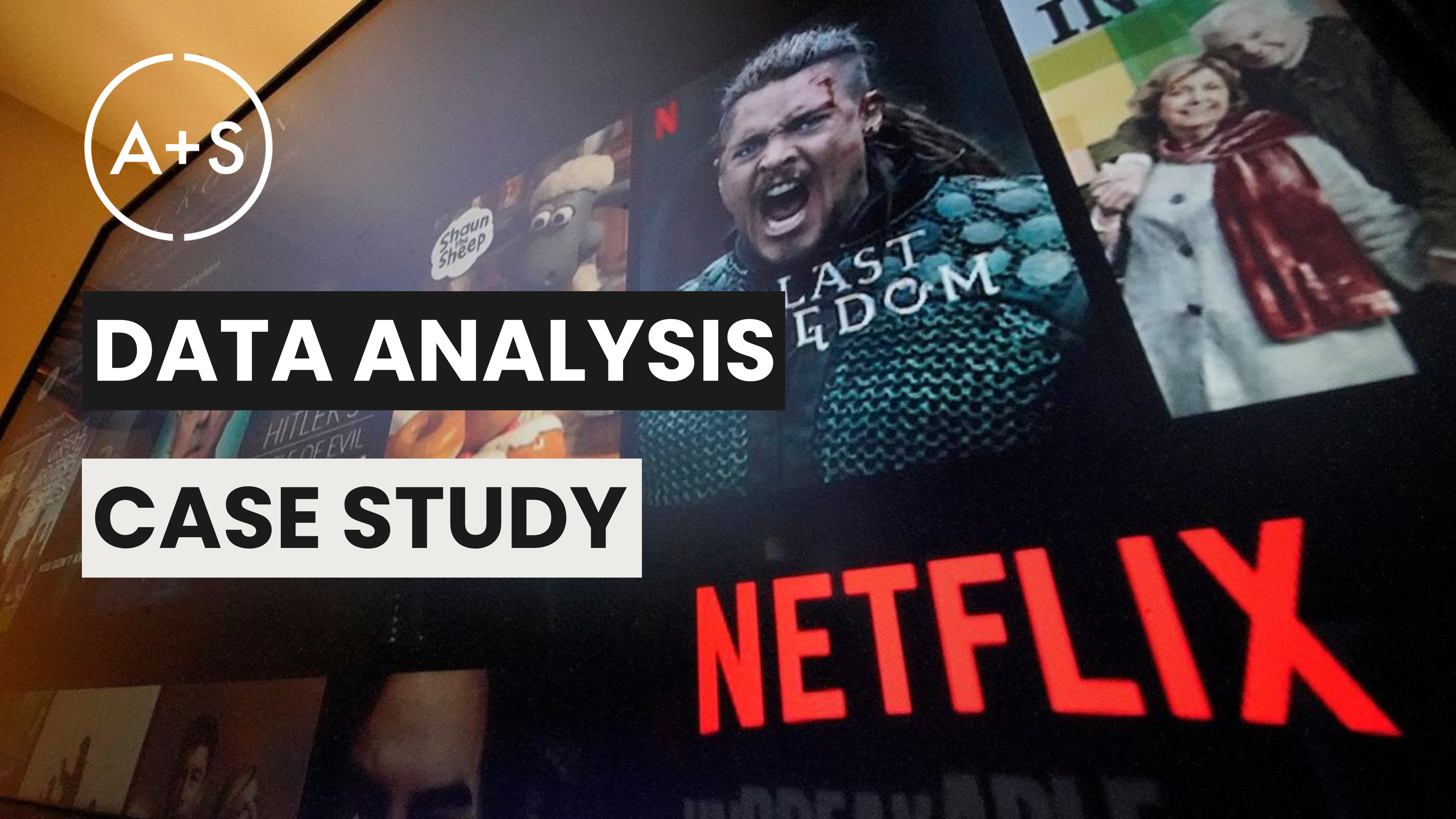We ended our last series on brand strategy with a declaration. The analyst is the Guardian of Objectivity. Your role is to ground strategy in fact. To be the firm, dispassionate voice of data in a world of intuition and opinion. That role is critical.
But it is no longer enough.
Objectivity without foresight is a liability. The world is changing. Artificial intelligence is not a distant threat or a source of hype. It is a present reality reshaping the value of every role in every company. AI is coming for the structured, repeatable parts of your job. This is not a possibility. It is a guarantee.
This presents a choice. You can become a relic, your work automated into oblivion. Or you can evolve, focusing your energy where the machine cannot compete. To make that choice, you need a map. This week, we provide one. It is called the Human-AI Career Nexus. It is a framework for understanding your risk and plotting your future. Your career depends on it.
THE CORE CONCEPT
The Human-AI Career Nexus is a framework for navigating the future of work. I developed it to analyze the impact of artificial intelligence on any role or industry. It is a simple 2×2 matrix, but it holds the key to your career resilience.
The framework is built on two dimensions.
The first is Structure. This is the horizontal axis. It measures the degree to which tasks are governed by rules, procedures, and predictable outcomes. High-structure work is repetitive and procedural. Low-structure work is ambiguous and undefined.
The second is Creativity. This is the vertical axis. It measures the need for human intuition, empathy, and novelty. High-creativity work demands original thought. Low-creativity work relies on logic and analysis over emotional insight.
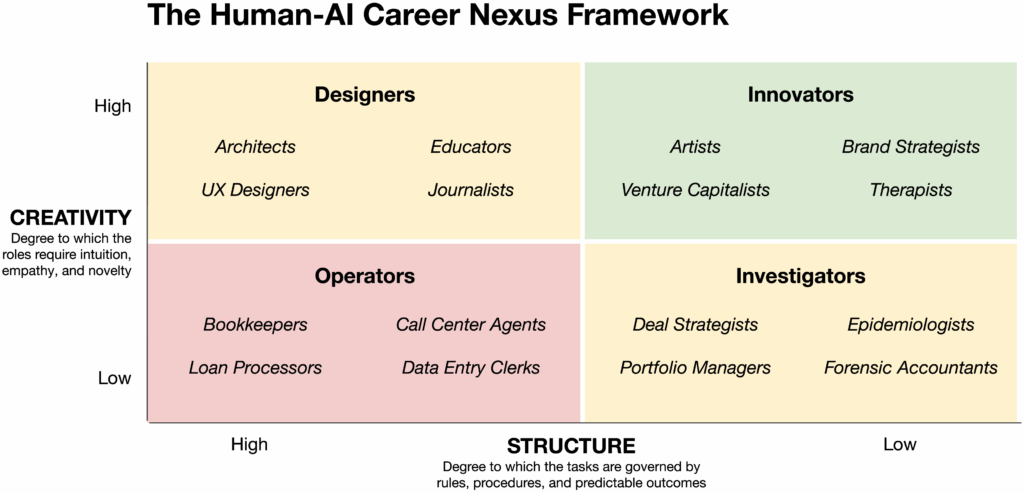
These two axes create four quadrants, each defining a different category of work:
- Operators (Low Creativity, High Structure): These are repetitive, rule-based tasks. Think data entry or basic report pulling. This quadrant is the most susceptible to AI replacement.
- Investigators (Low Creativity, Low Structure): This work involves complex, non-routine analysis in ambiguous environments. It requires interpreting complex data and making logical judgments with imperfect information.
- Designers (High Creativity, High Structure): This work blends creativity with established processes. Think of a UX designer or an architect creating something new within a set of rules and constraints.
- Innovators (High Creativity, Low Structure): This is the realm of true human ingenuity. It is about generating novel ideas and navigating complex human dynamics where no template exists. This quadrant is the least susceptible to AI.
This is not an academic exercise. This is a map of the modern workplace. You must locate your work on this map to survive what comes next.
STRATEGIC FRAMEWORK
The role of “data analyst” does not fit neatly into one quadrant. This is the central challenge and the core opportunity. Your job is a collection of tasks, and those tasks span the entire Nexus. Your future is determined by which quadrants you choose to work in.
First, confront the uncomfortable truth. A significant portion of analytics work resides in the Operator quadrant. Pulling weekly performance data. Refreshing a dashboard. Cleaning data according to a predefined script. These are low-creativity, high-structure tasks. They are valuable but hold no future. AI will perform these tasks with superior speed and accuracy. This part of your job is a melting iceberg. Get off of it.
The zone of durable value is in the other quadrants. When you move beyond reporting “what” happened and begin to investigate “why,” you become an Investigator. You are now operating in a low-structure environment, using your judgment to navigate ambiguity where the path is not defined.
When you design a compelling data visualization or craft a narrative to explain your findings, you become a Designer. You are applying human creativity within the high-structure framework of data and design principles. You are making data connect with a human audience.
The ultimate aspiration is to touch the Innovator quadrant. This happens when you move from analyzing the past to informing the creation of the future. You partner with brand strategists or product leaders, using data to identify entirely new opportunities or shape a narrative that resonates on an emotional level. You are not just a guardian of objectivity. You are an engine of creation.
THE ANALYST’S PLAYBOOK
Your goal is to deliberately migrate your work out of the bottom-left quadrant and into the top and right quadrants. This requires a disciplined, conscious effort. Here is your playbook.
- Audit Your Quadrant. For one full week, track your time. Categorize every professional task you perform into one of the four Nexus quadrants: Operator, Investigator, Designer, or Innovator. Be brutally honest. What percentage of your time is spent as an Operator? The resulting number is your personal career risk score. It is your baseline.
- Aggressively Automate Your Past. Target every task in your Operator quadrant for elimination. Use AI coding assistants to write scripts. Build parameterized reports. Create templates. Your goal is not to become more efficient at these tasks. Your goal is to make them require zero minutes of your time. Every minute saved here is a minute you can reinvest in higher-value work.
- Weaponize the “Why” Question. The work of Investigators begins when the dashboard ends. When a stakeholder sees a number, they have a question. Stop being the person who just provides the number. Become the person who provides the answer. For every significant data point, generate three distinct, testable hypotheses for why it occurred. This forces you out of structured reporting and into unstructured problem-solving.
- Deliver Stories, Not Spreadsheets. Designers make meaning. A spreadsheet does not convey meaning. It conveys data. For your next major analysis, refuse to deliver a spreadsheet. Deliver a story. Build a focused presentation with a clear narrative arc. Use visualization not to show data, but to create an emotional impact. This is structured creativity. It is a deeply human skill.
- Partner with Ambiguity. Innovators thrive where rules do not exist. Identify the person in your organization who has the most ambiguous and important problems. It might be a brand strategist, a product manager, or a senior executive. Schedule 30 minutes with them. Do not ask what reports they need. Ask them, “What is the most important question you are trying to answer?” Your job is not to solve it on the spot. Your job is to become their partner in giving structure to the unstructured.
FINAL THOUGHT
Artificial intelligence is not coming for the job of “data analyst.” It is coming for a set of tasks. It will automate the predictable, the repetitive, and the mundane. It will execute the work you should have been automating yourself. Let it.
Your true value is not in your ability to follow a process. It is in your ability to think, to create, to interpret, and to lead.
The machine can count anything.
Only you can determine what counts.
Keep Analyzing!
